 ESV Thinline BibleESV Bibles by Crossway ESV Thinline BibleESV Bibles by Crossway The top-selling ESV Thinline Bible is ideal for use at home and on-the-go. At one inch thick and available in multiple designs, there is an ideal ESV Thinline Bible for everyone.
Features: 1" thickConcordance with nearly 10,000 referencesFull-color mapsPagination matches the ESV Pew Bibles Ribbon markerSmyth-sewn bindingLifetime guaranteePackaging: Clamshell box (leather), slipcase (TruTone), or permanent slipcase (hardcover and cloth over board)  Never a City So Real: A Walk in ChicagoAlex Kotlowitz Never a City So Real: A Walk in ChicagoAlex Kotlowitz “Chicago is a tale of two cities,” headlines declare. This narrative has been gaining steam alongside reports of growing economic divisions and diverging outlooks on the future of the city. Yet to keen observers of the Second City, this is nothing new. Those who truly know Chicago know that for decades—even centuries—the city has been defined by duality, possibly since the Great Fire scorched a visible line between the rubble and the saved. For writers like Alex Kotlowitz, the contradictions are what make Chicago. And it is these contradictions that form the heart of Never a City So Real.
The book is a tour of the people of Chicago, those who have been Kotlowitz’s guide into this city’s – and by inference, this country’s – heart. Chicago, after all, is America’s city. Kotlowitz introduces us to the owner of a West Side soul food restaurant who believes in second chances, a steelworker turned history teacher, the “Diego Rivera of the projects,” and the lawyers and defendants who populate Chicago’s Criminal Courts Building. These empathic, intimate stories chronicle the city’s soul, its lifeblood.
This new edition features a new afterword from the author, which examines the state of the city today as seen from the double-paned windows of a pawnshop. Ultimately, Never a City So Real is a love letter to Chicago, a place that Kotlowitz describes as “a place that can tie me up in knots but a place that has been my muse, my friend, my joy.” 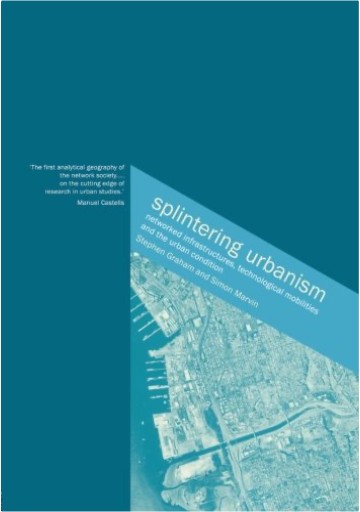 Splintering UrbanismStephen Graham Splintering UrbanismStephen Graham Splintering Urbanism makes an international and interdisciplinary analysis of the complex interactions between infrastructure networks and urban spaces. It delivers a new and powerful way of understanding contemporary urban change, bringing together discussions about:
*globalization and the city
*technology and society
*urban space and urban networks
*infrastructure and the built environment
*developed, developing and post-communist worlds.
With a range of case studies, illustrations and boxed examples, from New York to Jakarta, Johannesberg to Manila and Sao Paolo to Melbourne, Splintering Urbanism demonstrates the latest social, urban and technological theories, which give us an understanding of our contemporary metropolis.  The Caryatids: A NovelBruce Sterling The Caryatids: A NovelBruce Sterling Alongside William Gibson and Neal Stephenson, Bruce Sterling stands at the forefront of a select group of writers whose pitch-perfect grasp of the cultural and scientific zeitgeist endows their works of speculative near-future fiction with uncanny verisimilitude. To read a novel by Sterling is to receive a dispatch from a time traveler. Now, with The Caryatids, Sterling has written a stunning testament of faith in the power of human intellect, creativity, and spirit to overcome any obstacle–even the obstacles we carry inside ourselves.
The world of 2060 is divided into three spheres of influence, each fighting with the others over the resources of fallen nations and an environment degraded almost to the point of no return. There is the Dispensation, centered in Los Angeles, where entertainment and capitalism have fused with the highest of high-tech. There is the Acquis, a Green-centered collective that uses invasive neurological technology to create a networked utopia. And there is China, the sole surviving nation-state, a dinosaur that has prospered only by pitilessly pruning its own population. Products of this monstrous world, the daughters of a monstrous mother, and–according to some–monsters themselves, are the Caryatids: the four surviving female clones of a mad Balkan genius and wanted war criminal now ensconced, safely beyond extradition, on an orbiting space station. Radmila is a Dispensation star determined to forget her past by building a glittering, impregnable future. Vera is an Acquis functionary dedicated to reclaiming their home, the Croatian island of Mljet, from catastrophic pollution. Sonja is a medical specialist in China renowned for selflessly risking herself to help others. And Biserka is a one-woman terrorist network. The four “sisters” are united only by their hatred for their “mother”–and for one another.
When evidence surfaces of a coming environmental cataclysm, the Dispensation sends its greatest statesman–or salesman–John Montgomery Montalban, husband of Radmila, and lover of Vera and Sonja, to gather the Caryatids together in an audacious plan to save the world. 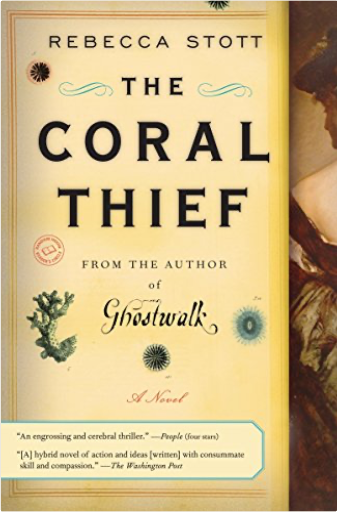 The Coral Thief: A NovelRebecca Stott The Coral Thief: A NovelRebecca Stott NAMED ONE OF THE BEST BOOKS OF THE YEAR BY THE WASHINGTON POST AND BOOKLIST
Paris, 1815. Daniel Connor, a young medical student from Edinburgh, has arrived to study anatomy at the Jardin des Plantes—only to realize that his letters of introduction and precious coral specimens, on which his tenure with the legendary Dr. Cuvier depends, have been stolen. His thief turns out to be a beautiful woman who lives in a shadowy realm of outlaws, philosophers, and émigrés. As Daniel falls in love with her, he discovers a radical theory of evolution that irrevocably changes his conception of the world.  The Information Diet: A Case for Conscious ComsumptionClay A. Johnson The Information Diet: A Case for Conscious ComsumptionClay A. Johnson This is a softcover version of the title released in 2011; there is no new material.
The modern human animal spends upwards of 11 hours out of every 24 in a state of constant consumption. Not eating, but gorging on information ceaselessly spewed from the screens and speakers we hold dear. Just as we have grown morbidly obese on sugar, fat, and flour—so, too, have we become gluttons for texts, instant messages, emails, RSS feeds, downloads, videos, status updates, and tweets.
We're all battling a storm of distractions, buffeted with notifications and tempted by tasty tidbits of information. And just as too much junk food can lead to obesity, too much junk information can lead to cluelessness. The Information Diet shows you how to thrive in this information glut—what to look for, what to avoid, and how to be selective. In the process, author Clay Johnson explains the role information has played throughout history, and why following his prescribed diet is essential for everyone who strives to be smart, productive, and sane.
In The Information Diet, you will: Discover why eminent scholars are worried about our state of attention and general intelligenceExamine how today’s media—Big Info—give us exactly what we want: content that confirms our beliefsLearn to take steps to develop data literacy, attention fitness, and a healthy sense of humorBecome engaged in the economics of information by learning how to reward good information providersJust like a normal, healthy food diet, The Information Diet is not about consuming less—it’s about finding a healthy balance that works for you 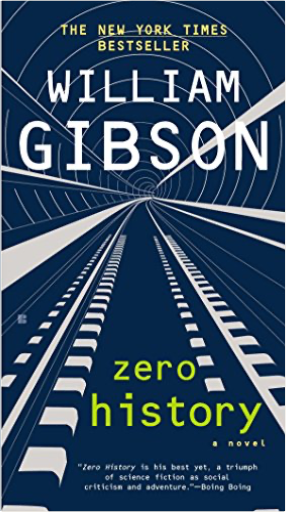 Zero HistoryWilliam Gibson Zero HistoryWilliam Gibson Hollis Henry never intended to work for global marketing magnate Hubertus Bigend again. But now she’s broke, and Bigend has just the thing to get her back in the game...
Milgrim can disappear in almost any setting, and his Russian is perfectly idiomatic—so much so that he spoke it with his therapist in the secret Swiss clinic where Bigend paid for him to be cured of his addiction...
Garreth doesn't owe Bigend a thing. But he does have friends from whom he can call in the kinds of favors powerful people need when things go sideways...
They all have something Bigend wants as he finds himself outmaneuvered and adrift, after a Department of Defense contract for combat-wear turns out to be the gateway drug for arms dealers so shadowy they can out-Bigend Bigend himself.
“Zero History is [Gibson’s] best yet, a triumph of science fiction as social criticism and adventure.”—BoingBoing.net 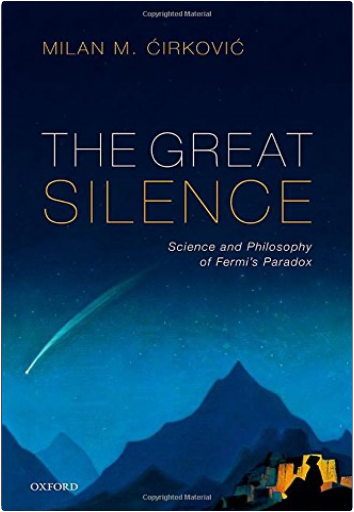 The Great Silence: Science and Philosophy of Fermi's ParadoxMilan M. Ćirković The Great Silence: Science and Philosophy of Fermi's ParadoxMilan M. Ćirković The Great Silence explores the multifaceted problem named after the great Italian physicist Enrico Fermi and his legendary 1950 lunchtime question "Where is everybody?" In many respects, Fermi's paradox is the richest and the most challenging problem for the entire field of astrobiology and the Search for ExtraTerrestrial Intelligence (SETI) studies.
This book shows how Fermi's paradox is intricately connected with many fields of learning, technology, arts, and even everyday life. It aims to establish the strongest possible version of the problem, to dispel many related confusions, obfuscations, and prejudices, as well as to offer a novel point of entry to the many solutions proposed in existing literature. 'Ćirković argues that any evolutionary worldview cannot avoid resolving the Great Silence problem in one guise or another. 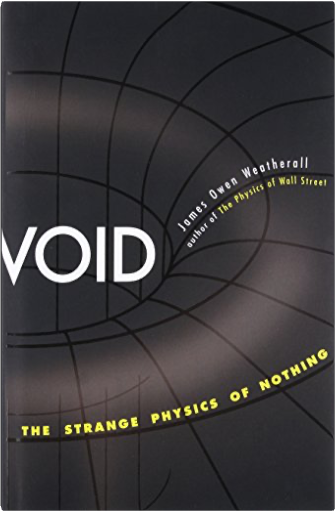 Void: The Strange Physics of NothingJames Owen Weatherall Void: The Strange Physics of NothingJames Owen Weatherall The rising star author of The Physics of Wall Street explores why “nothing” may hold the key to the next era of theoretical physics
James Owen Weatherall’s previous book, The Physics of Wall Street, was a New York Times best-seller and named one of Physics Today’s five most intriguing books of 2013. In his newest volume, he takes on a fundamental concept of modern physics: nothing. The physics of stuff—protons, neutrons, electrons, and even quarks and gluons—is at least somewhat familiar to most of us. But what about the physics of nothing? Isaac Newton thought of empty space as nothingness extended in all directions, a kind of theater in which physics could unfold. But both quantum theory and relativity tell us that Newton’s picture can’t be right. Nothing, it turns out, is an awful lot like something, with a structure and properties every bit as complex and mysterious as matter. In his signature lively prose, Weatherall explores the very nature of empty space—and solidifies his reputation as a science writer to watch. 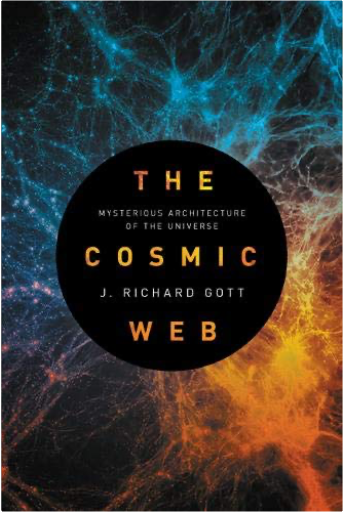 The Cosmic Web: Mysterious Architecture of the UniverseJ. Richard Gott The Cosmic Web: Mysterious Architecture of the UniverseJ. Richard Gott A gripping first-person account of how scientists came to understand our universe's mysterious structure
J. Richard Gott was among the first cosmologists to propose that the structure of our universe is like a sponge made up of clusters of galaxies intricately connected by filaments of galaxies―a magnificent structure now called the "cosmic web" and mapped extensively by teams of astronomers. Here is his gripping insider's account of how a generation of undaunted theorists and observers solved the mystery of the architecture of our cosmos.
The Cosmic Web begins with modern pioneers of extragalactic astronomy, such as Edwin Hubble and Fritz Zwicky. It goes on to describe how, during the Cold War, the American school of cosmology favored a model of the universe where galaxies resided in isolated clusters, whereas the Soviet school favored a honeycomb pattern of galaxies punctuated by giant, isolated voids. Gott tells the stories of how his own path to a solution began with a high-school science project when he was eighteen, and how he and astronomer Mario Jurič measured the Sloan Great Wall of Galaxies, a filament of galaxies that, at 1.37 billion light-years in length, is one of the largest structures in the universe.
Drawing on Gott’s own experiences working at the frontiers of science with many of today’s leading cosmologists, The Cosmic Web shows how ambitious telescope surveys such as the Sloan Digital Sky Survey are transforming our understanding of the cosmos, and how the cosmic web holds vital clues to the origins of the universe and the next trillion years that lie ahead. 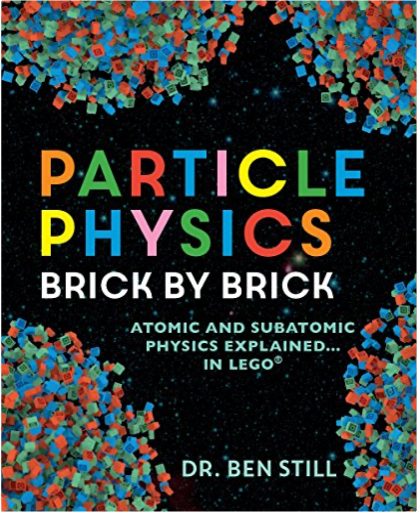 Particle Physics Brick by Brick: Atomic and Subatomic Physics Explained... in LEGODr. Ben Still PhD Particle Physics Brick by Brick: Atomic and Subatomic Physics Explained... in LEGODr. Ben Still PhD A simple and entertaining introduction to the building blocks of the universe.
In 2014 the Lego® Group sold 62 billion Lego® pieces. That's 102 Lego® bricks for every person in the world. That's nothing however to the estimated seven billion billion billion atoms that make up each of us, let alone the between ten quadrillion vigintillion and one-hundred thousand quadrillion vigintillion atoms in the known observable universe.
Thankfully, understanding atomic and subatomic physics need not be infathomable. Lego® bricks are a great way to visualize the blueprint of the Universe, right down to its smallest elements.
Particle Physics Brick by Brick explains how and with what the universe came to be. It introduces the Standard Model of Physics, the "rule book" of physics which has been proven correct again and again since its mid-20 century development. Today, it is the gaps in the model that keep physicists busy.
In concise chapters, the book assigns to each atomic element a colored Lego® brick, such as neutrons, leptons, and quarks. By assembling actual or imaginary bricks and observing their relationships and interactions, particle physics becomes clear. The book opens with the Standard Model of Physics, the physicists and the discoveries made over history, and directions on how to use the book.
The chapters that follow are:
Building Blocks and Construction RulesBuilding a UniverseElectromagnetism and QED (Quantum ElectroDynamics)The Strong Force and QCD (Quantum ChromoDynamics)The Weak Force and Breaking SymmetriesBroken Symmetry and MassProblems with GhostsViolated SymmetryThe Future.
Particle Physics Brick by Brick is a succinct introduction for anyone that wants to gain a basic understanding of the atomic world, its elements and how they interact. By using tangible substitutes — bricks — it brings the unseen atomic world into the realm of the visual. 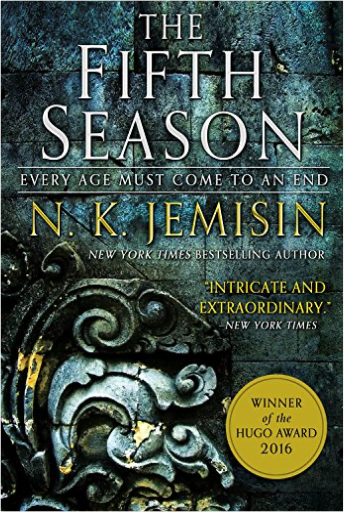 The Fifth Season (The Broken Earth (1))N. K. Jemisin The Fifth Season (The Broken Earth (1))N. K. Jemisin At the end of the world, a woman must hide her secret power and find her kidnapped daughter in this "intricate and extraordinary" Hugo Award winning novel of power, oppression, and revolution. (The New York Times)
This is the way the world ends...for the last time.
It starts with the great red rift across the heart of the world's sole continent, spewing ash that blots out the sun. It starts with death, with a murdered son and a missing daughter. It starts with betrayal, and long dormant wounds rising up to fester.
This is the Stillness, a land long familiar with catastrophe, where the power of the earth is wielded as a weapon. And where there is no mercy.
Read the first book in the critically acclaimed, three-time Hugo award-winning trilogy by NYT bestselling author N. K. Jemisin.
For more from N. K. Jemisin, check out:
The Inheritance Trilogy
The Hundred Thousand Kingdoms
The Broken Kingdoms
The Kingdom of Gods
The Inheritance Trilogy (omnibus edition)
Shades in Shadow: An Inheritance Triptych (e-only short fiction)
The Awakened Kingdom (e-only novella)
Dreamblood Duology
The Killing Moon
The Shadowed Sun
The Broken EarthThe Fifth SeasonThe Obelisk Gate |
 ESV Thinline BibleESV Bibles by Crossway
ESV Thinline BibleESV Bibles by Crossway  Never a City So Real: A Walk in ChicagoAlex Kotlowitz
Never a City So Real: A Walk in ChicagoAlex Kotlowitz  Splintering UrbanismStephen Graham
Splintering UrbanismStephen Graham  The Caryatids: A NovelBruce Sterling
The Caryatids: A NovelBruce Sterling  The Coral Thief: A NovelRebecca Stott
The Coral Thief: A NovelRebecca Stott  The Information Diet: A Case for Conscious ComsumptionClay A. Johnson
The Information Diet: A Case for Conscious ComsumptionClay A. Johnson  Zero HistoryWilliam Gibson
Zero HistoryWilliam Gibson  The Great Silence: Science and Philosophy of Fermi's ParadoxMilan M. Ćirković
The Great Silence: Science and Philosophy of Fermi's ParadoxMilan M. Ćirković  Void: The Strange Physics of NothingJames Owen Weatherall
Void: The Strange Physics of NothingJames Owen Weatherall  The Cosmic Web: Mysterious Architecture of the UniverseJ. Richard Gott
The Cosmic Web: Mysterious Architecture of the UniverseJ. Richard Gott  Particle Physics Brick by Brick: Atomic and Subatomic Physics Explained... in LEGODr. Ben Still PhD
Particle Physics Brick by Brick: Atomic and Subatomic Physics Explained... in LEGODr. Ben Still PhD  The Fifth Season (The Broken Earth (1))N. K. Jemisin
The Fifth Season (The Broken Earth (1))N. K. Jemisin  Made with Delicious Library
Made with Delicious Library